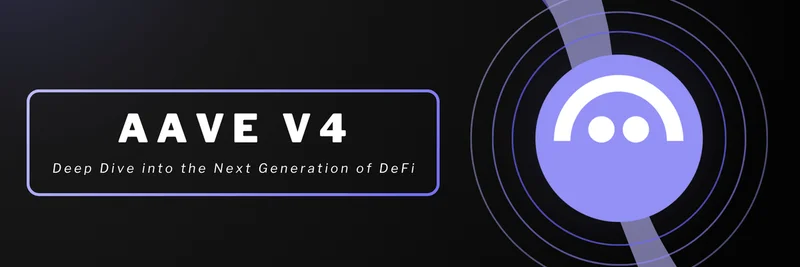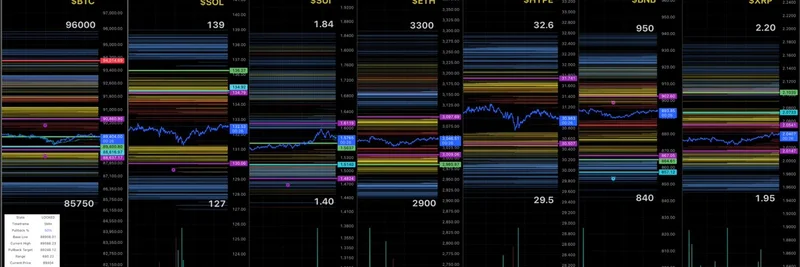If you're into DeFi, you've probably heard of AAVE—one of the biggest names in decentralized lending. Recently, the folks at TokenLogic dropped a fascinating thread on X breaking down AAVE V4, the upcoming upgrade that's set to shake things up. Let's dive into what this means in simple terms, why it's exciting, and how it could impact the broader blockchain ecosystem, including opportunities for meme token enthusiasts who often leverage DeFi for quick trades and yields.
The Big Shift: Introducing Liquidity Hubs
AAVE V4 isn't just a minor update; it's a complete rethink of how liquidity works in DeFi. At the heart of this is the Liquidity Hub, which acts like a central pool for all the assets on a network. In older versions like AAVE V3, liquidity was split across different markets, making things inefficient and fragmented.
With the new hub, everything is unified. It handles key stuff like supply and borrow caps, interest rates, supported assets, and even incentives. The cool part? Other parts of the system can tap into this hub for liquidity without creating silos. This means better efficiency and less risk of liquidity drying up in one corner while overflowing in another.
Spokes: Custom Borrowing Strategies
Connected to these hubs are "Spokes"—think of them as customizable borrowing modules. Instead of one-size-fits-all markets, each Spoke can be tailored for different risk levels and user needs. For example, one Spoke might be for conservative ETH holders borrowing stablecoins, while another caters to high-yield chasers using liquid staking tokens (LSTs) in efficiency mode (E-Mode).
This setup isolates risks. If something goes wrong in a high-risk Spoke, it doesn't spill over to the safer ones. It's like having separate lanes on a highway for different types of drivers. Plus, it opens the door for specialized strategies, which could be a game-changer for meme token traders looking to borrow against volatile assets without tanking the whole system.
How It All Flows Together
In practice, users supply assets to the Liquidity Hub, which tracks everything from total liquidity to utilization rates. Spokes then borrow from this hub, paying a base rate plus a premium based on their risk profile. Higher risk means higher costs—simple as that.
AAVE V4 also brings smart accounts into the mix. These let you manage multiple positions from one wallet, making it easier to handle complex trades like recursive yields without juggling accounts. For blockchain practitioners, this means smoother UX and more focus on strategy over logistics.
Risk-Based Pricing and Innovation
Gone are the days of uniform rates. In V4, the same asset can have different yields depending on the Spoke. Take USDC, for instance—it might yield more in a high-demand Spoke for yield-bearing stablecoins like those from Ethena Labs, where recursive trades are common.
This modular design makes it easier to roll out new features. Imagine fixed-rate lending for predictable borrowing, using real-world assets (RWAs) as collateral, or even depositing LP shares from DEXs to borrow against them. For institutions, there could be permissioned Spokes with KYC for compliant lending.
These innovations could trickle down to meme tokens too. As DeFi gets more efficient, it becomes easier to use meme coins as collateral or in high-yield strategies, potentially boosting liquidity and adoption in the meme space.
Potential New Features on the Horizon
TokenLogic highlights some exciting possibilities:
- Fixed Rates: Lock in your lending or borrowing rate for stability.
- RWA Collateral: Borrow against tokenized real-world assets like real estate or stocks.
- LP Shares as Collateral: Use your DEX liquidity positions to secure loans with custom risk settings.
- Institutional Permissioning: KYC-gated options for big players entering DeFi.
These aren't set in stone yet, as V4 is still in development, but they show how AAVE is evolving to meet diverse needs.
Wrapping It Up
AAVE V4 promises to make DeFi more scalable, secure, and user-friendly by unifying liquidity and modularizing risks. As TokenLogic points out, this could fundamentally change how we lend and borrow in crypto. For meme token fans, keep an eye on this—better DeFi tools mean more ways to amplify your plays, from leveraging volatile memes to earning yields on holdings.
If you're curious for more, check out the original thread on X. What's your take on AAVE V4? Will it boost meme token integrations in DeFi?


